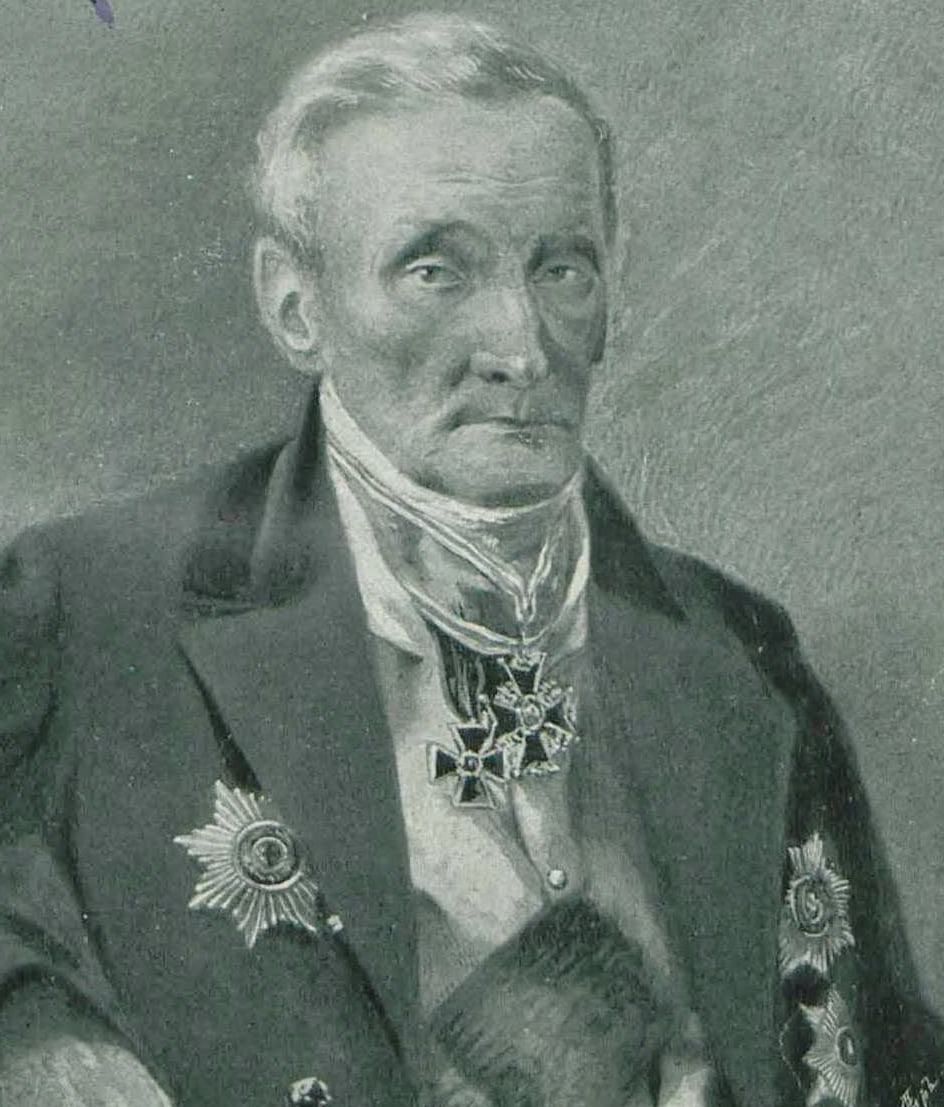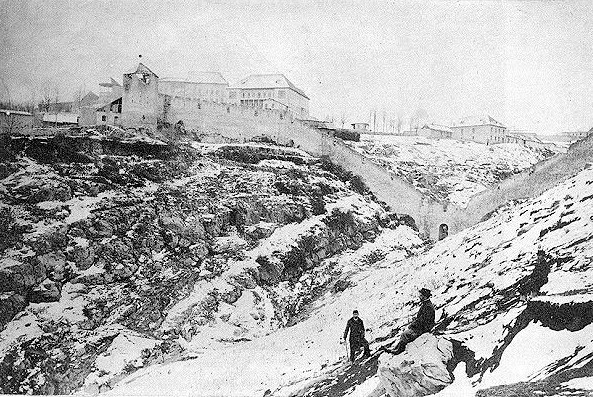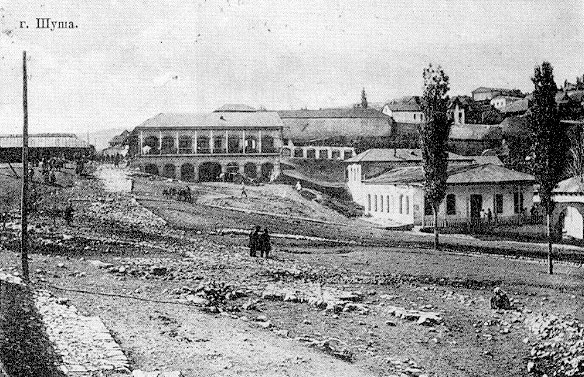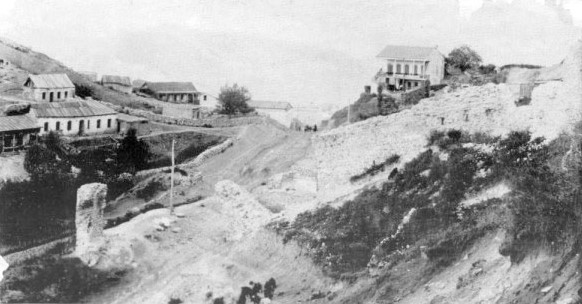The trip of Russian officer, Andrey Mikhaylovich Fadeyev, to Shusha
The memoirs of tsarist officer, the governor of Saratov oblast of Russia (1841-1846), member of the council of Main administration of South Caucasus region (1846 – till his death), Andrey Mikhaylovich Fadeyev (1790-1867) were published in 1897. Qarabag.com has prepared material about the trip and impressions of the Russian officer, related to one of the cities of Azerbaijan, Shusha, and the representatives of Karabakh nobility.
During the trip to Karabakh (approximately in 1846 or later, after he had been appointed as a member of the council of Main administration of South Caucasus region), Andrey Mikhaylovich Fadeyev complained about the impassability or bad roads in the direction of Shusha.
[The memoirs of Andrey Mikhaylovich Fadeyev 1790-1867. In two parts. 1897, p. 94-95]
 On the way to Shusha, Fadeyev had lunch in a kibitka (tilt cart) on the shore of Kuruchay river (left tributary of Aras river, which flowed through the territory of Khojavend and Fizuli regions). In addition, he noted that the road 6 versts (1 verst = 3,500 feet) from Shusha, which rose on a steep rocky mountain, had been laid by Russian general of Armenian origin – Valerian Grigoryevich Madatov. According to the book “The History of the Reign of Emperor Alexander I and Russia in his day” (1871), this road was laid in 1823-1825.
On the way to Shusha, Fadeyev had lunch in a kibitka (tilt cart) on the shore of Kuruchay river (left tributary of Aras river, which flowed through the territory of Khojavend and Fizuli regions). In addition, he noted that the road 6 versts (1 verst = 3,500 feet) from Shusha, which rose on a steep rocky mountain, had been laid by Russian general of Armenian origin – Valerian Grigoryevich Madatov. According to the book “The History of the Reign of Emperor Alexander I and Russia in his day” (1871), this road was laid in 1823-1825.
[The memoirs of Andrey Mikhaylovich Fadeyev 1790-1867. In two parts. 1897, p. 94-95]
[The History of the Reign of Emperor Alexander I and Russia in his day. Vol. VI. 1871, p. 328]
Upon arrival in Shusha, Fadeyev noted that the city was located at the foot of the mountain, at a height of more than two thousand feet above sea level and therefore there was a good, healthy climate. There were the villages and buildings of different buildings of former khans, their families, a fortress and a large regimental camp of the local army on both sides of it. The best and largest buildings with special architecture, in the form of castles, belonged to the descendants of the former khan’s family. The city was quite big, partly developed, with large stone houses. There were no gardens, but almost all the houses were planted with trees.
[The memoirs of Andrey Mikhaylovich Fadeyev 1790-1867. In two parts. 1897, p. 95]
Being in Shusha, Fadeyev first met with the knyaz Konstantin Tarkhanov, who probably was the uyezd chief of Shusha at that time, and further became the governor of Baku. He also met with the governor of the city – Murachev and other officers and citizens. There were the representatives of Karabakh nobility among them: the wife of the last Karabakh khan Mehdigulu Khan – Bedirjahan-Beyim, her daughter, poetess and philanthropist Khurshidbanu Natavan, the wife of the second Karabakh khan Ibrahim-Khalil – Javahir Khanim and his grandson Jafargulu Khan. They were the main representatives of the local Karabakh aristocracy.
“Rich widow of Mehdigulu Khan (Bedirjahan-Beyim) was quite educated and even secular from oriental point of view. She hospitably received guests who visited her and kindly endowed them with peshkesh (gift) made by her. That was a beautiful carpet. She constantly manufactured excellent carpets of Persian type in large quantities. They were very durable, with different beautiful patterns and of different sizes. Almost always they were long, but not of square shape. This work was done in the harem silence by her servants. She often took part in the work herself. The carpets were manufactured not for sale, but solely as the gifts, which were generously produced by her to all her casual friends both personally and in absentia. She sent these carpets throughout the region. Her daughter (Khurshidbanu Natavan) lived with her together with her husband, bey Khassay Utsmiyev, an officer who was attached to the governor. She was a very pretty person who deserved the name of “Karabakh rose” thanks to her beauty (we are talking about Kh. Natavan).
[The memoirs of Andrey Mikhaylovich Fadeyev 1790-1867. In two parts. 1897, p. 96]
[E. Ismayilov. The Caucasus and Globalization. Volume 8, issue 3-4, 2014. Article: Khans of Karabakh: generational description of the elder line of the family., p. 140]


“The elderly dowager khan’s wife, Javahir Khanim, who was a very important, elderly Tatar lady, carefully maintained her khan’s greatness. According to rumours, she was of Christian origin, from Georgian princesses, captured in her infancy by the Tatars, who had escorted her to the khan’s harem, where she had converted to Islam and had become main wife of the khan. Some say that she is diligent Muslim now but, probably, due to the memory of her former faith, or perhaps due to some feeling of sympathy for it, which has not had time to be numbed by long-term Islamism, she has not still able to tolerate the church bell ringing and at the sounds of it, diligently covers her ears.”
The Georgian origin of one of the wives of Ibrahim-Khalil khan is confirmed in an article of Azerbaijani historian Eldar Ismayilov. The article says that Javahir Khanim (nee Sofia) was the daughter of Georgian knyaz Evgeni Abashidze. Further, according to Fadeyev, Javahir Khanim and the widow of Mehdigulu Khan came to Tiflis with a visit to the duchess Vorontsova, with large retinue of the servants and handmaidens observing all the oriental etiquette and ceremonies befitting their rank.
[The memoirs of Andrey Mikhaylovich Fadeyev 1790-1867. In two parts. 1897, p. 96-97]
[E. Ismayilov. The Caucasus and Globalization. Article: Khans of Karabakh: generational description of the elder line of the family. Vol. 8, issue 3-4, 2014, p. 136]
“Jafargulu Khan was a colonel of about sixty years old, who spoke Russian worthy. He probably learned it in St. Petersburg, where he had served for six years, and then for two more years in Simbirsk, where he had been exiled to the prison. (He was exiled by the government in 1822, and came back to Karabakh in 1830). He lived in Shusha on a grand scale. Although he lived with European trends, there was predominant Tatar style in his life. He invited me to have lunch with him, and in order to acquaint me with his lifestyle and its pleasures, he arranged great celebration with Asian amusements, dancing, music, singing, and of course with champagne; and in the evening we played Boston, which lasted well after midnight, and as a result I came back to home with heaviness in the head.”
[The memoirs of Andrey Mikhaylovich Fadeyev 1790-1867. In two parts. 1897, p. 96]
[E. Ismayilov. The Caucasus and Globalization. Article: Karabakh khans: the origin of the family, the subjugation of the Khanate by the Russian Empire and the abolition of the khan’s power. Vol. 8, issue 1-2, 2014, p. 167]
[E.Ismayilov. The Caucasus and Globalization. Article: Khans of Karabakh: generational description of the elder line of the family. Vol. 8, issue 3-4, 2014, p. 154]
In addition, Fadeyev noted that, on the territory of Astar-Abad, thirty versts (about 1,067 km) from Guba city, the plantations of the madder (a plant that is used as paint) was allocated by the government for Jafargulu Khan.
[The memoirs of Andrey Mikhaylovich Fadeyev 1790-1867. In two parts. 1897, p. 153]

Leaving Shusha, Fadeyev finally visited the theater and considered it quite decent for an uyezd and Tatar town. After lunch at Tarkhanov’s, before leaving for Sheki city, Fadeyev visited the garden of Mehdigulu Khan’s wife, which was located ten versts from Shusha, where he spent the night due to heavy rain.
[The memoirs of Andrey Mikhaylovich Fadeyev 1790-1867. In two parts. 1897, p. 97]
There is the South Caucasus soldier’s song in the book “The Memoirs of Andrey Mikhaylovich Fadeyev 1790-1867” (1897), which, probably, was dedicated to Jafargulu Khan.
Ay Luli, Ay Luli
Near village Kululi
Kalantarov was very scared
And Jafargulu ran away.
He ran away very fast,
He took to his heels;
That was how Jafargulu ran away.
[The memoirs of Andrey Mikhaylovich Fadeyev 1790-1867. In two parts. 1897, p. 96]